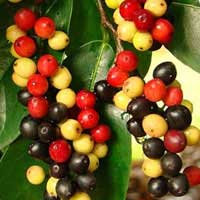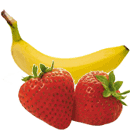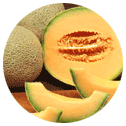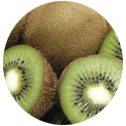 Full List of Fruits
Full List of Fruits  Bignay fruit
Bignay fruitBignay Fruit
Scientific name - Antidesma bunius
Bignay fruit, indigenous to Southeast Asia and northern Australia has its roots in the family Phyllanthaceae. Commonly recognized by several names such as Bignay, bugnay, bignai, Queensland cherry, wild cherry, currant tree and more, Antidesma bunius is the scientific name of the bignay fruit.
Having the potential to reach just about 30 meters height, it is classified under the category of a variable plant and it can be short or tall and erect. The evergreen leaves of the tree are large oval shaped and leathery that ranges about 20cm long and seven inches wide as a matter of fact, they are shrubby in nature. Fond to the twigs of the tree with diminutive petioles, it creates a dense canopy. The skin of the fruit is emaciated and rough, however yields a profusion of bright-red juice, which is prone to stains on fabrics.
![]() Nutritional Value of Bignay fruit
Nutritional Value of Bignay fruit
The bignay fruit is rich in essential nutrients, vitamins, and minerals. It is a great source of dietary fiber, vitamin C, and manganese. The fruit has a high content of antioxidants, which can help protect the body from free radical damage, reducing the risk of several chronic diseases. It is also packed with phenolic compounds, which can help lower inflammation and promote overall health. Bignay has been found to be beneficial for reducing blood pressure and improving cardiovascular health. It can also help regulate blood sugar levels and reduce the risk of type 2 diabetes. It is also known to reduce cholesterol levels and protect against certain types of cancer.
| Moisture | 91.11-94.80 g |
| Protein | 0.75 g |
| Ash | 0.57-0.78 g |
| Calcium | 0.12 mg |
| Phosphorus | 0.04 mg |
| Iron | 0.001 mg |
| Thiamine | 0.031 mg |
| Riboflavin | 0.072 mg |
| Niacin | 0.53 mg |
![]() Health Benefits of Bignay fruit
Health Benefits of Bignay fruit
The bignay fruit has many potential health benefits, and it is an excellent source of nutrition for people of all ages. It is a great addition to any diet, and it can be enjoyed in a variety of ways. Bignay can be eaten fresh, juiced, or made into jams, jellies, and sauces. It can also be used in baking or added to smoothies and salads.
 Treat Syphilis
Treat Syphilis
 Antidote for Snake Bites
Antidote for Snake Bites
 Help to Lose Weight:
Help to Lose Weight:
Despite it's not strictly tropical, it has established to be resilient up to central Florida. Flowering well, sources say that it does not set out any fruit particularly in Israel.
In order to provide cross-pollination, for every 10 to 12 females, one male tree is planted. When the trees are not that matured enough, wind-protection is desirable. Requiring less cultural attention, it is believed that the trees are spaced 40 to 45 ft (12-14m) apart, each way for it to thrive well.
As far as the propagation method is concerned, it is believed that vegetative propagation method is preferred, seeing that seedlings may turn out to be male and female saplings which may not bear for a number of years and as a matter of fact; many seeds are non-viable in Florida. Some of the other methods of propagation include cuttings, grafting or air-layering.



















